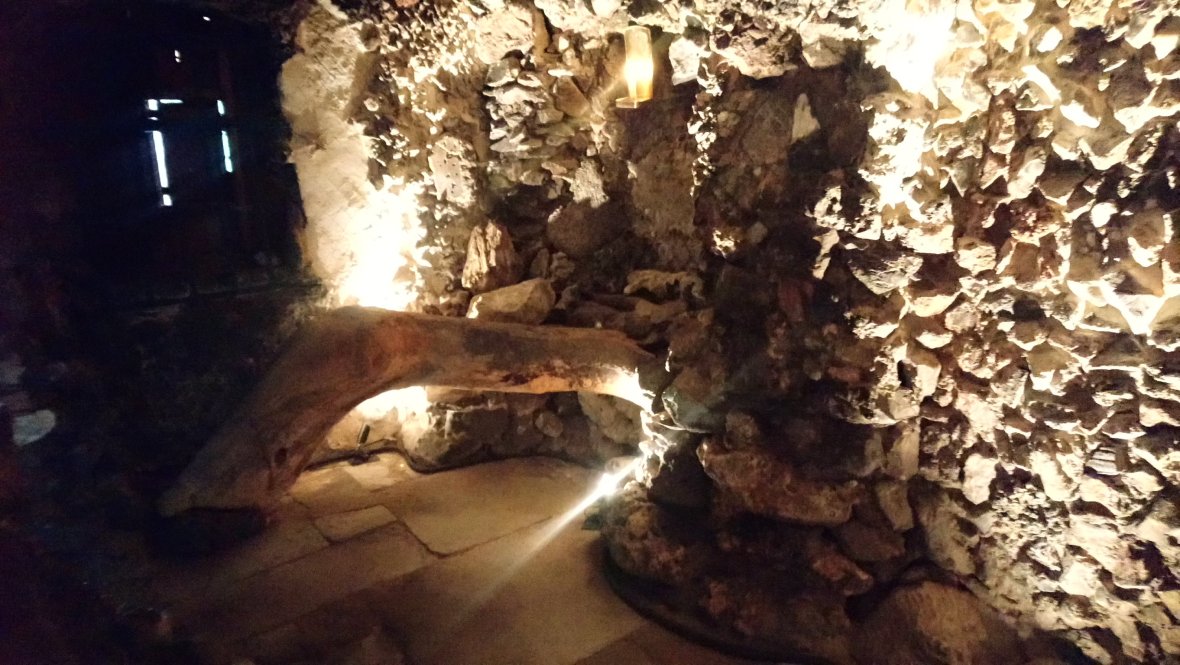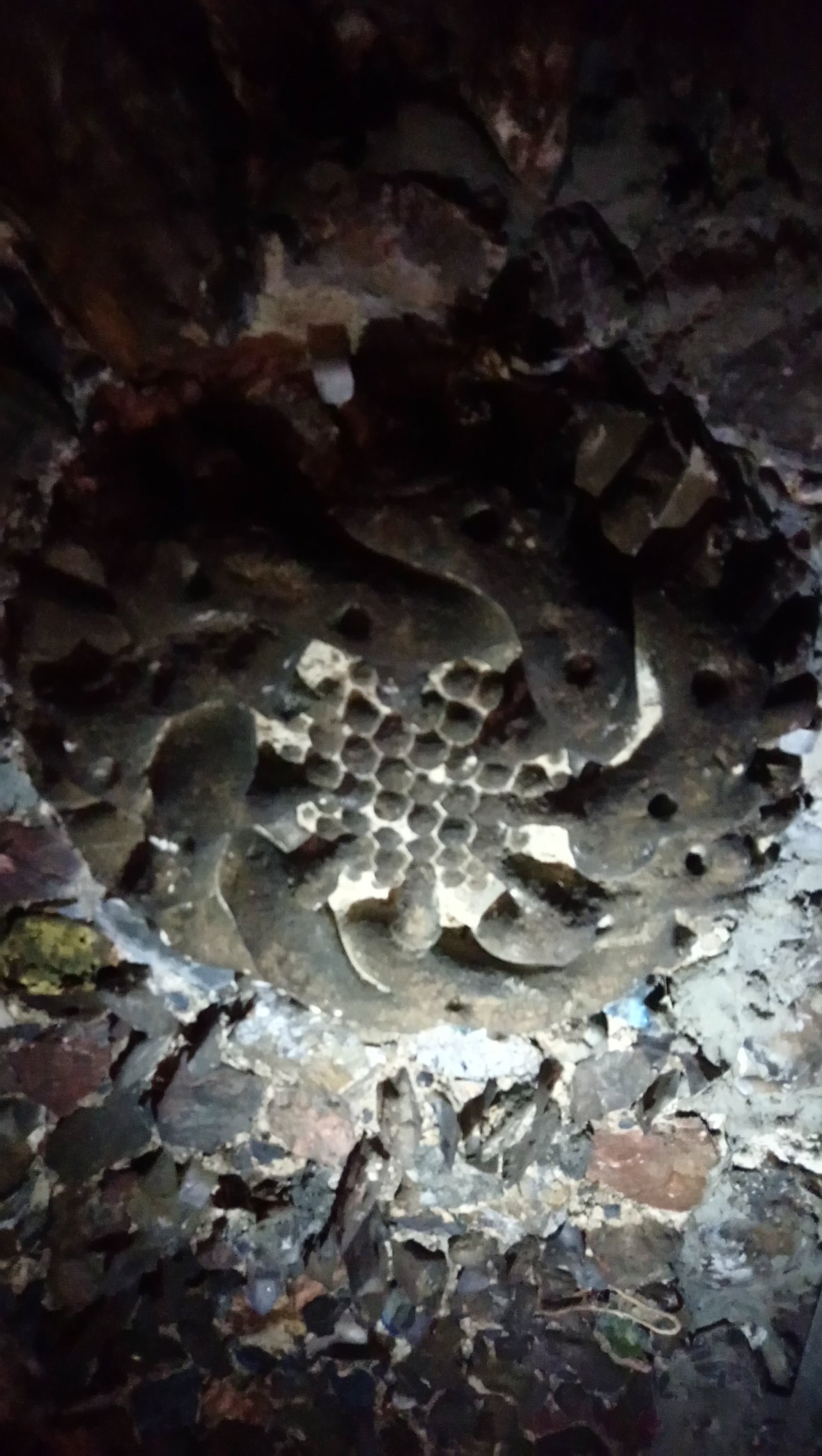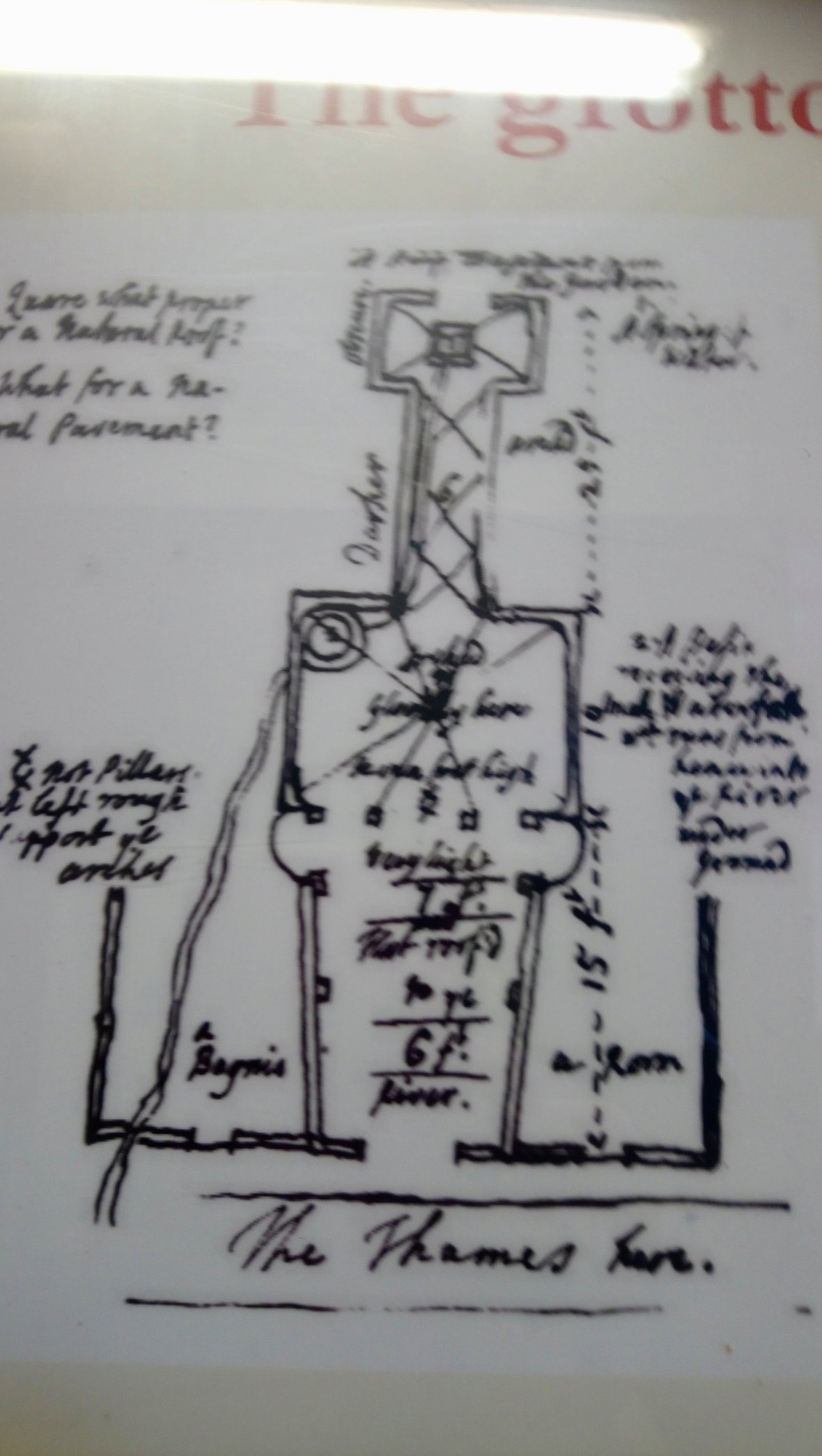
Of late, though fhrewsday hath not fpake, fhe hath learnt much.
Here’s what’s in her head today.
Pope. That’s who: not the Holy Father with the little purple cap and an air of infallibility, but the poet who lived and died an invalid some 270ish years ago.
Alexander Pope. The man who is the second most quoted writer in the Oxford Dictionary of Quotations, just behind Shakespeare, yet who chose to eschew glory at his death and be buried beneath a small paving slab with ‘P’ inscribed in a tiny font in a church in Twickenham.
Pope: the man who set the tongues of Thames landowners, up and down a-wagging about Greek Revival Gardens; Pope, son of Pope the linen merchant and his wife Edith; Pope the catholic in an anti-Catholic world; Pope the wordsmith, Pope the collector of curiosities. Pope the brooding, Pope the moody, Pope the infirm, Pope the friend.
Pope the willow tree planter.
In 1719, just a few years shy of 300 years ago, Alexander Pope decided to move to Twickenham. The great and the good were realising that the Thames and local road network meant you could live in a rural idyll yet still be close to London. They were settling in a well ordered fashion along the Thames.
Pope bought land there. He began to build a Palladian mansion. This needs a grand garden; but the house had a ‘grassplot’ only, overlooked by a tannery, a bricklayers yard, a malthouse and more.
Pope planted a small willow sapling there.
And then he bought land across the road and began to plan a beautiful Palladian garden.
Pope was not a well man: he suffered from a kind of tuberculosis, Potts disease, and he had other problems too. Crossing a road was quite a challenge; and so a year after he arrived he began to build a tunnel beneath the road. He could enter it from his villa and emerge in the garden a short while later.
The gardens at Pope’s Villa became famous and admired. The tunnel was decorated, but it was not until a little later that a chance visit to Avon Gorge (to the hot spa there) kindled in him a keen interest in minerals, and he decorated the tunnel and grotto with them.
The poet enlisted a friend, Dr William Borlase, and other well wishers and friends to send him minerals and curiosities, their litany like a roll-call: ores, spars, mundic, stalactites, crystals, diamonds, marbles, alabaster, snakestones and spongestone.
Even bits of Wookey Hole and the Giant’s Causeway.
This was art imitating nature, and local celebrities imitated art imitating nature. Grottos sprang up along the Thames, including the one I pass every day: belonging to Marble HIll House, and the creation of Pope’s good friend Henrietta Howard, subtle and skillful former king’s mistress.
Not much survives of the sumptuous coral and shell perfection she created in her grotto; but though Pope’s villa was demolished, yet his grotto survives and is undergoing refurbishment.
I walked there lately. Where Pope used to sit and write, listening to the trickle of an especially diverted stream and watching the Thames reflected into his grotto by camera obscura.
“I have put the last hand to my works… happily finishing the subterraneous Way and Grotto: I then found a spring of the clearest water, which falls in a perpetual Rill, that echoes thru’ the Cavern day and night. …When you shut the Doors of this Grotto, it becomes on the instant, from a luminous Room, a Camera Obscura, on the walls of which all the objects of the River, Hills, Woods, and Boats, are forming a moving Picture… And when you have a mind to light it up, it affords you a very different Scene: it is finished with Shells interspersed with Pieces of Looking-glass in angular Forms… at which when a Lamp …is hung in the Middle, a thousand pointed Rays glitter and are reflected over the place.”







With thanks for Twickenham Museum for their ever encyclopaedic knowledge and the wonderful resource that is their site. You can find them here
Ah Kate you are fadly mifsed; but we can be sure of a gem like thif when you do.
You made me laugh out loud Brian. You out- ffed me. Hope you are in excellent health and thank you so much for this warm welcome back.
Reblogged this on LordBeariOfBow and commented:
I don’t know if any of those who read and follow my rants and rubbish have ever met Kate fhrewsday, she does very little these days but her pofts are well worth reading.
She has a delightful dog named Macauley, who drops hif ballast often. and recorded.af a warning.
It appears that the use of letter S is being returned to it’s previous style, of fomething
This is a gem from Kate Shrewsday; , enjoy. 😀
Thank you Brian! Most appreciated! Mac sends his love.
Ah thank you Mac 😀
It is what fellow humans produce, not for money, that seems to most please me.
Me too, Yelcho. Creativity rocks.
Ah, Kate, I’d forgotten how much I’d missed your gorgeous way with words, your mellifluity as it were, and your rambles down historic byways — although it’s curiously only a week since I’d wondered whether we’d be seeing another of your posts any time soon.
And worth the wait. I’d no idea what Pope had accomplished here even though I’ve long been aware of grottos, from the Renaissance rediscovery Nero’s ‘underground’ Golden House in Rome and the ‘grotesques’ found painted on its walls, down to its modern transformation where anything unpleasant is termed ‘grotty’; from the Boboli Gardens in Florence to the must-have garden feature of so many of those returning from the Grand Tour, whether shell-encrusted caverns or the walls of Pope’s tunnel glittering with minerals. But the Bristol connection was news to me, especially Pope’s acquisition of so-called Bristol diamonds; but that reminded me that Goldney Hall overlooking Hotwells and the Avon Gorge has its own wonderful shell grotto. So many links and so much to chase up, thanks!
As always, I learn something new from your wide vision, Chris 🙂 I look forward to the results of your chasings up!
Wow. This is so fascinating. And the place seems to be incredible. Would love to visit it.
Hello Banno, so great to hear from you! Hope all is well in your neck of the woods and with the family. If you are ever in England let me know – the grotto is a must-see.
Yes, I love the idea of this creation by Pope.
These days men have sheds!
Ha! Slightly less ambitious and easier to fit into the back garden, Andrew 🙂 Thank you for popping by and commenting!
I came by via LordBeariOfBow ‘s blog!
This is so amazing! Loved looking at the photos! Thank you for sharing this info with us!
HUGS,
Carolyn 🙂
Welcome Caroline, and thank you so much for the mention Brian! Grottos are not the easiest places to photograph but these give the gist of what Pope’s was like. Thank you for popping over today.
There’s nothing quite like little wonders. ☺
You are right. I was having a conversation with the Celt which followed that pattern: the little things make life navigable. (Which is why the Celt wants a yurt in the back garden)
Dear Kate, three or four years ago, I followed your blog so faithfully because of my delight in Macaulay and in the history you taught me through your postings. I began to blog once more in April 2017, but didn’t know how to find your blog. Then, wonder of wonders, I saw a comment by you.
Now I discover that you, too, have been gone awhile. I’m so pleased that I’ll be able to read your postings again. They always entertain, educate, and delight me. Peace.
Some things are just meant to be, Dee 🙂 How lovely to hear fro you, and I am so pleased you are blogging again. Thank you for your comments and I look forward to reading your words very soon. Peace to you to, and a wonderful day to boot.
So pleased to find your post in my reader…… and the bonus of it dealing with Pope who seems to have dropped from view for decades.
Hello Helen, lovely to hear from you! Pope is definitely on his way back, For one thing, the banks of the Thames at Richmond and Twickenham are a-buzz with his affairs once again. I think the grotto will be open for tours every now and then in the medium term.
Dunno how I mifsed thif when you were the subject of conversation (mifsed pofts) scant days ago. Anyway, I got here via Oz.
I do love grottoes, and that of the Pope-not-of-Rome seems a beauty.
When you are next across with the family, Col, it is well worth the visit.
What a remarkable place to experience, Kate. It’s a marvel to consider how it was created 300 years ago, yet remains for us to ponder. I am so glad to see your post and to see that you have continued your sleuthing! You share with depth and that bridges any gaps in frequency! 🙂
Thank you Debra 🙂 I hope all is well – I know so much has happened in the last 18 months. All the best to you and the family x
Wow. Who knew?
I came by way of Lord BeariofBow…the lights reflected and sparkling in his grotto…Pope would have LOVED Faerie Lights.